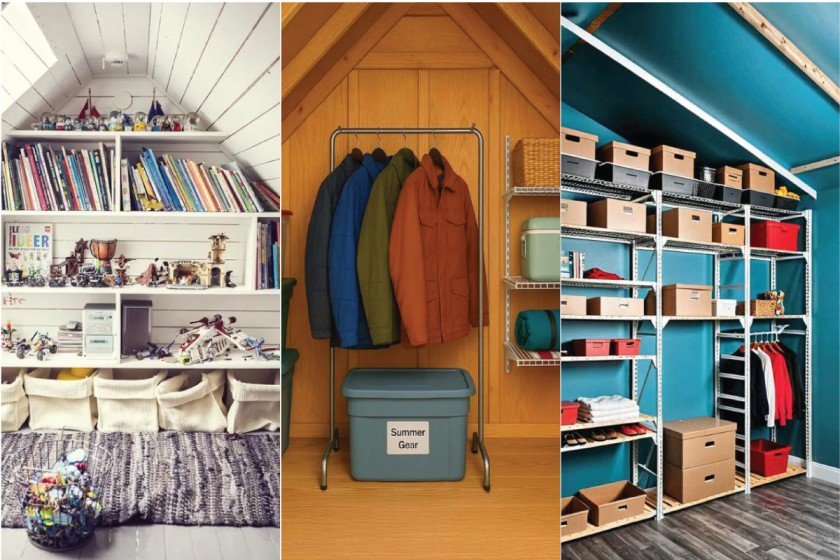An attic often becomes a forgotten space, filled with old boxes and unused things. Yet this area has great potential. With a little effort, it can become an organized, functional part of the home.
Whether your attic is small, large, sloped, or oddly shaped, there are smart ways to use every inch. Here are 13 attic storage ideas that help you keep things tidy and easy to find.

1. Built-In Shelving Along the Walls
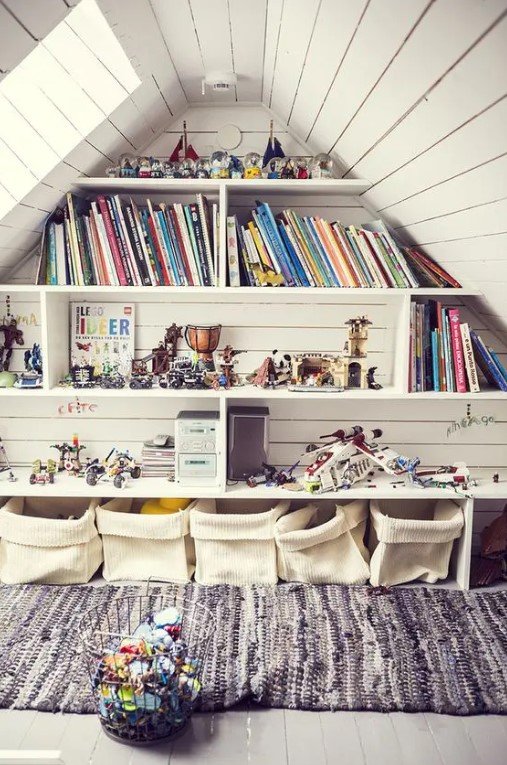
Wall shelves can make the best use of attic walls, especially under slanted ceilings. They hold boxes, books, and decorations without taking up floor space.
Wood shelves look warm and classic, while metal or laminate ones give a clean, modern look. Measure the space carefully before installing them so each shelf fits well under the roofline.
Label boxes or baskets to keep track of items. Seasonal clothes, holiday decor, and old toys fit perfectly here. Built-in shelves also keep the floor open for easy walking or other furniture.
2. Storage Under the Eaves
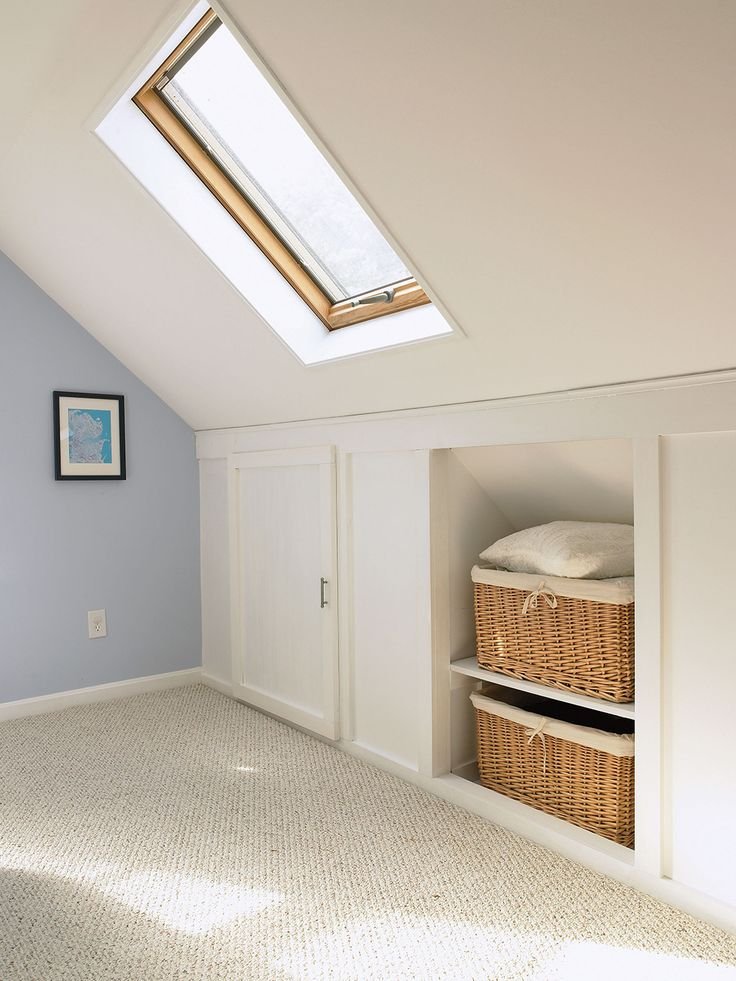
The eaves are those low, sloping parts that are often wasted space. You can turn them into handy storage. Install drawers, pull-out bins, or sliding doors under these slopes. They hide clutter and make the attic look neat.
Short drawers are ideal for smaller items like wrapping paper, linens, or photo albums. For a polished look, paint the drawers the same color as the walls. This trick makes them blend in smoothly. Every small corner matters in an attic, so under-eave storage works wonders.
3. Use Stackable Plastic Bins
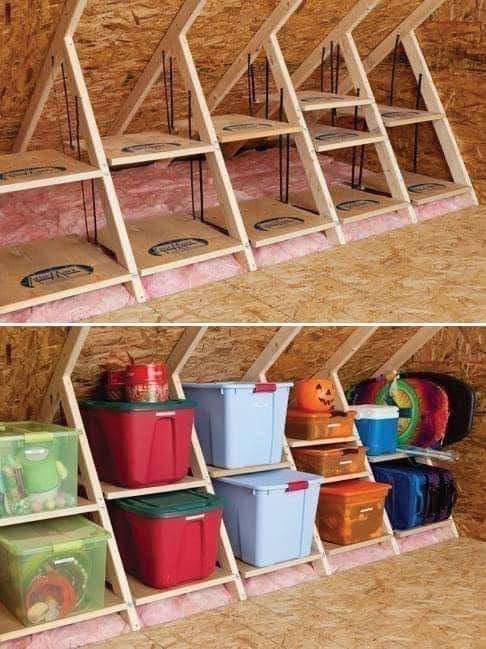
Plastic bins are one of the easiest and cheapest attic storage ideas. They protect items from dust, moisture, and pests. Clear bins let you see what’s inside without opening them. Stack them safely against a wall or under the rafters.
Keep heavy bins at the bottom and lighter ones on top to avoid damage. Use labels for each bin like “Winter Clothes” or “Old Books.” This simple system saves time when you need to find something fast.
4. Install Hanging Rods for Clothes

Attics make great spots for extra clothing storage. A hanging rod or two can turn the space into a mini wardrobe. Secure the rod between beams or under a slanted wall. Then hang off-season clothes, coats, or fancy outfits you don’t wear often.
Add a small dresser or baskets under the hanging area for shoes and accessories. Make sure the attic stays cool and dry so fabrics don’t get damaged. With good lighting, this space can look almost like a boutique closet.
5. Add a Pegboard Wall
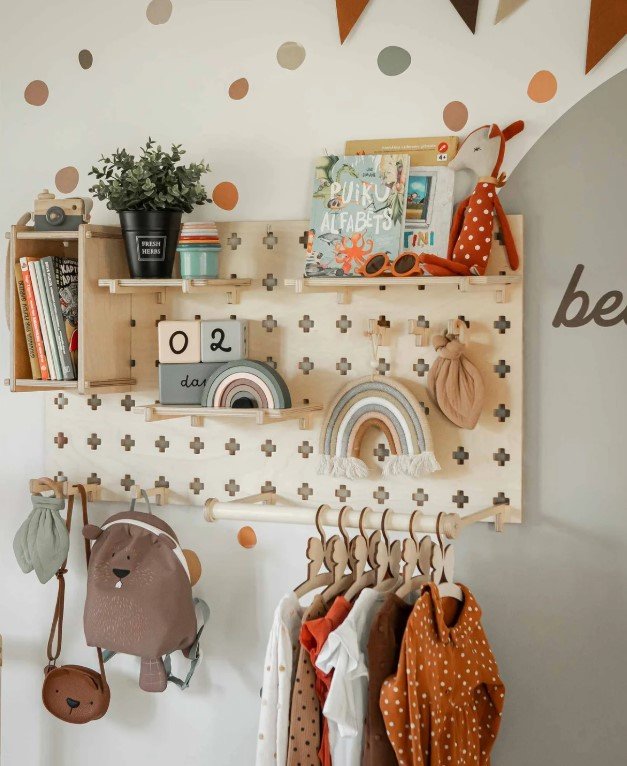
A pegboard gives flexible and visible storage. Attach one to a free wall and use hooks or small shelves for tools, craft supplies, or accessories. Change the layout anytime by moving the hooks around.
For a fun touch, paint the pegboard a light color to brighten the attic. Pegboards help keep things off the floor, which is helpful if the attic has limited walking space. It’s perfect for people who love neat, visual organization.
6. Use Rolling Storage Carts
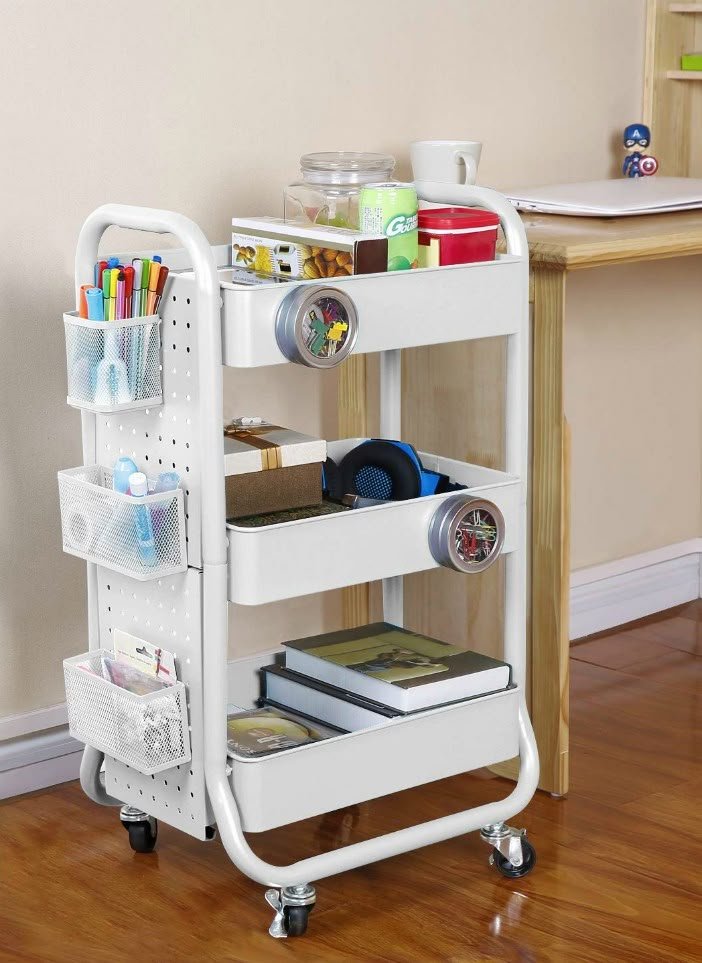
Rolling carts bring convenience to attic storage. They fit well under low ceilings and move easily from one corner to another. Store cleaning supplies, sewing tools, or office materials in them.
A three-tier metal cart works especially well for art or craft supplies. Label each level so you can find items quickly. The wheels let you bring the whole cart downstairs when needed. It’s a flexible storage option for a changing household.
7. Create a Hidden Storage Bench

A storage bench serves two purposes seating and storage. Place one near a window or along a flat wall. The seat lifts to reveal space inside for blankets, old clothes, or keepsakes.
Add soft cushions on top for comfort. It turns the attic into a cozy reading corner while keeping clutter out of sight. Wooden benches are durable and can be painted to match the attic’s style.
8. Use Vertical Space with Tall Cabinets

Attics with higher ceilings can hold tall storage units. A slim, tall cabinet helps use the vertical height while saving floor area. Store items that need protection from dust like documents, crafts, or electronics.
Choose cabinets with adjustable shelves. They make it easy to fit different-sized items. For safety, secure tall furniture to the wall, especially on uneven floors. A few simple cabinets can turn the attic into an organized mini storeroom.
9. Create Labeled Zones
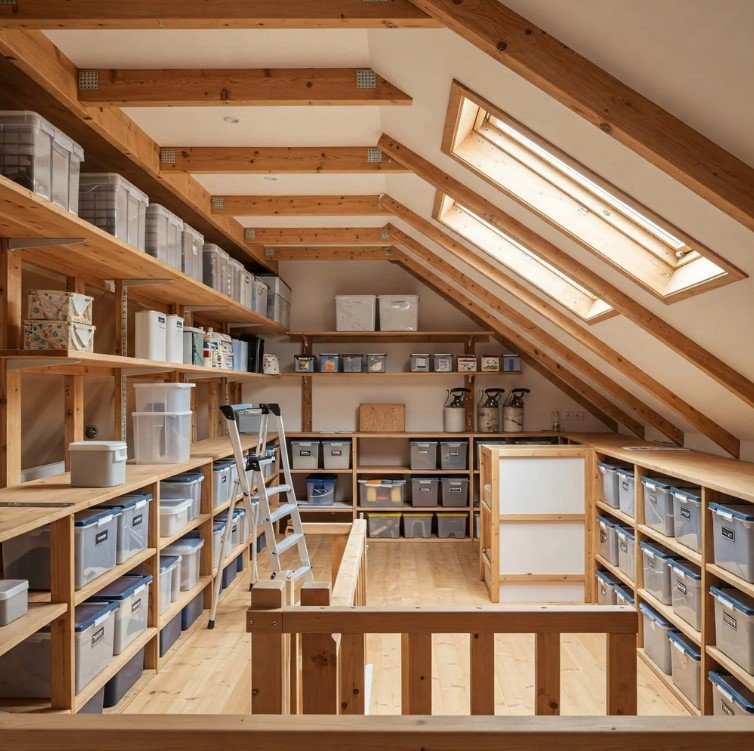
Dividing the attic into zones makes storage easier to manage. For example, one section for holiday decorations, one for clothes, and one for family keepsakes. This zoning system saves time and prevents confusion later.
Use area rugs or signs to mark each zone. Keep items in matching containers to create a clean, consistent look. This idea works well for families who share attic space. Everyone knows where their items belong, and clutter stays under control.
10. Install Pull-Down Racks or Hooks
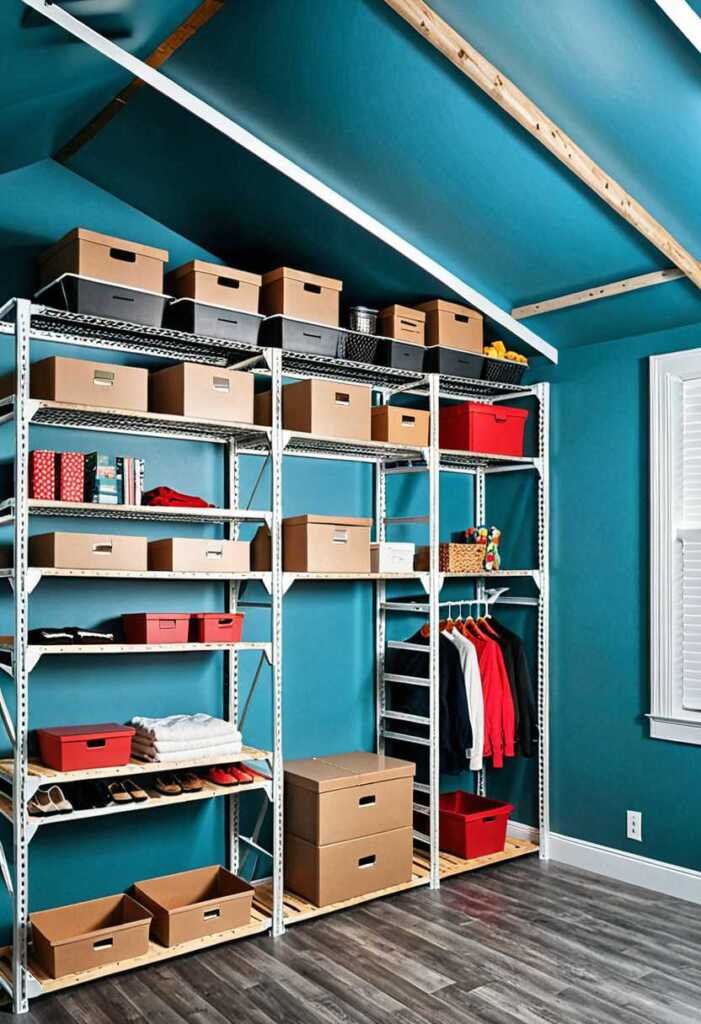
Ceiling hooks or pull-down racks make use of overhead space that usually goes unused. Store sports gear, camping tools, or bicycles up high. These racks keep large items out of the way but still accessible.
Check that the ceiling can support the weight before installing. Pull-down racks with handles or straps make it easy to lift or lower items safely. It’s a clever option for homeowners with limited floor area in their attic.
11. Use Old Furniture for Extra Storage
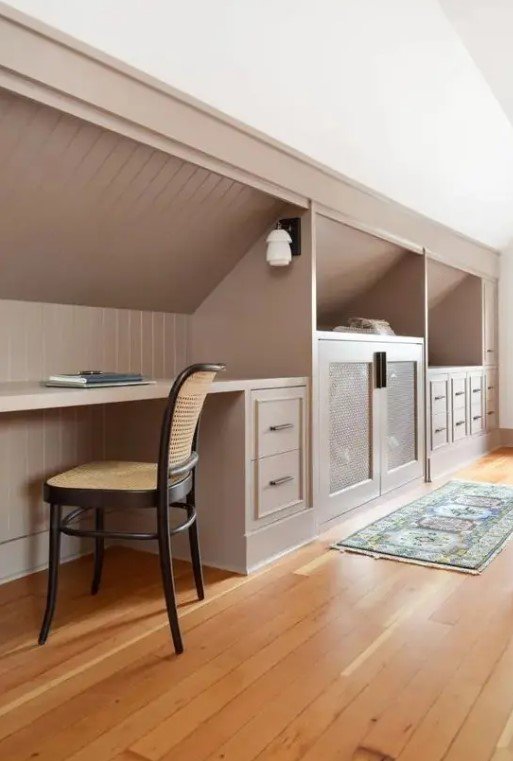
Old dressers, cabinets, or chests can get a new life in the attic. Instead of buying new furniture, reuse what you have. Paint or sand them for a fresh look.
An old chest is perfect for storing photo albums or blankets. A small dresser can hold craft materials or kids’ old clothes. Mixing old furniture pieces also gives the attic a cozy, lived-in feeling. Plus, it’s budget-friendly and eco-conscious.
12. Build Custom Storage Around Rafters
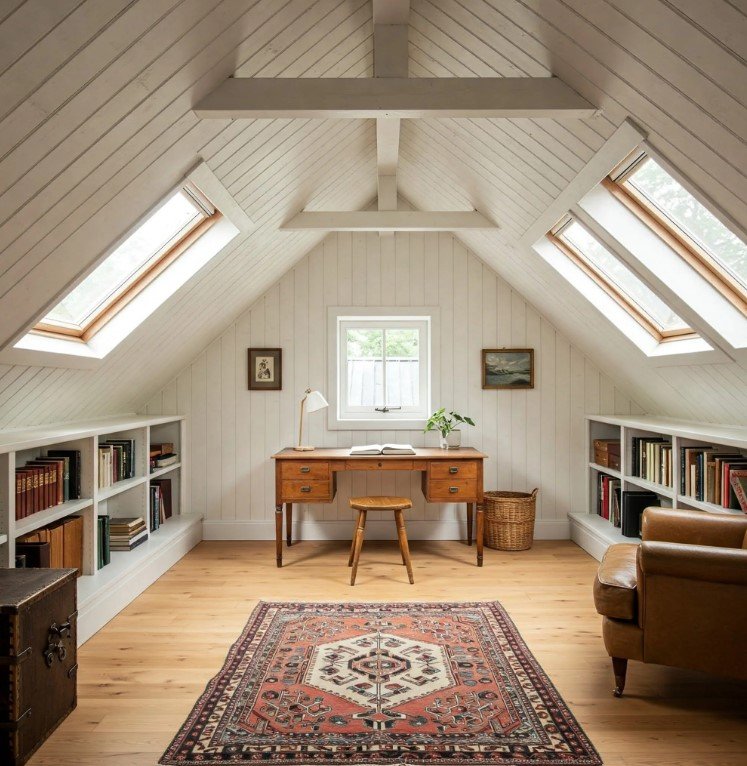
Every attic is different, with beams, angles, and slopes. Custom-built storage makes use of these unique shapes. Hire a carpenter or use DIY skills to create fitted cabinets or cubbies that follow the roof’s design.
These built-ins can hold almost anything books, linens, or seasonal gear. Paint them light colors to make the space feel open. Custom storage adds value to the home and turns an awkward attic into a well-planned area.
13. Keep It Climate Controlled
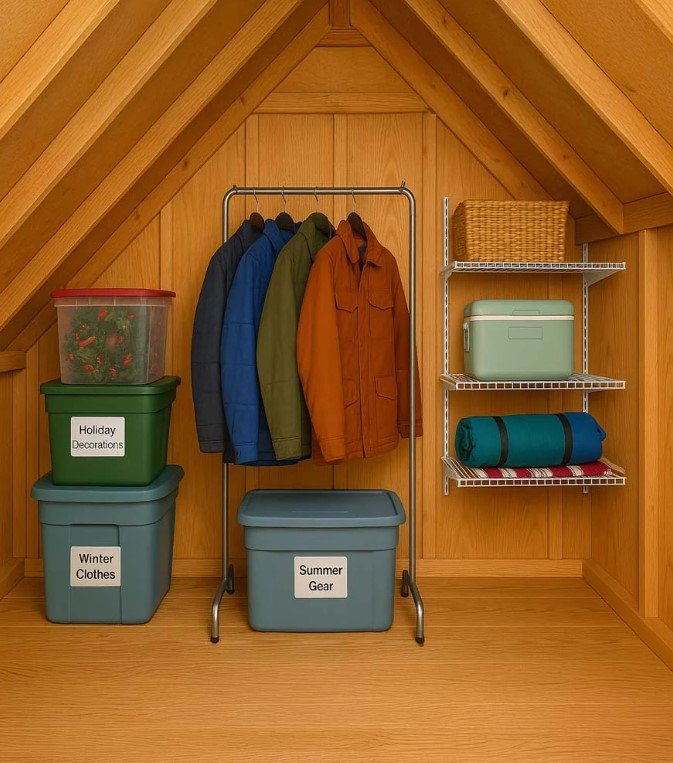
Proper temperature and moisture control protect stored items from damage. Many attics get too hot in summer and too cold in winter. Add insulation and ventilation to keep it balanced.
Use a small dehumidifier to reduce dampness. Avoid storing delicate items like photos or electronics unless the attic has good airflow. A climate-controlled attic stays clean, dry, and safe for long-term storage.
Conclusion
A well-organized attic brings peace of mind. Every box, bin, and shelf has its place. Small steps like labeling, zoning, or reusing old furniture make a big difference. The key is to plan smartly and use every corner wisely.
An attic doesn’t have to be a messy, forgotten space. With the right ideas, it can become a neat, practical, and even cozy part of your home. These 13 attic storage ideas show that good organization isn’t hard it just needs creativity, care, and a little effort.

